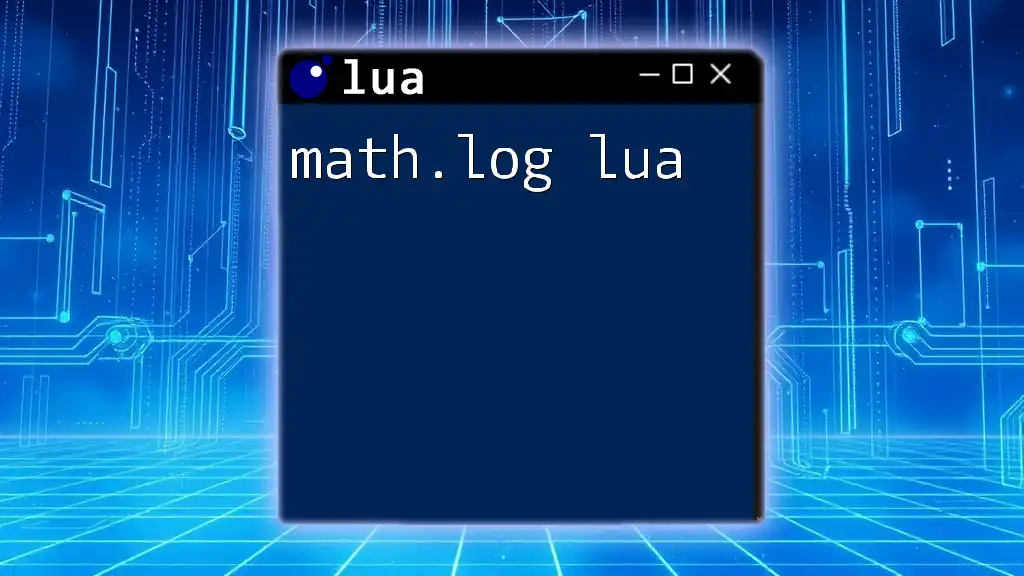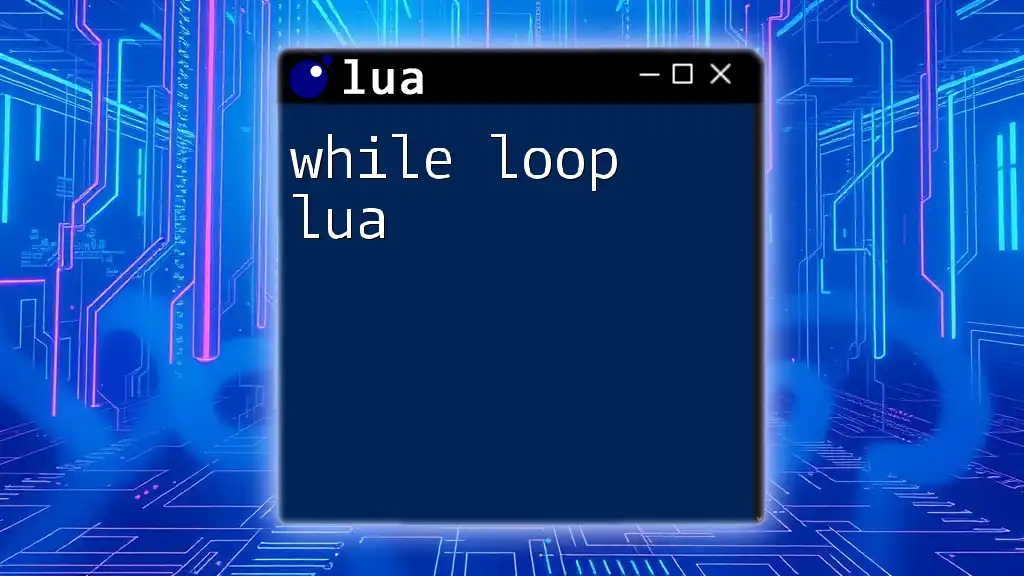A while loop in Lua repeatedly executes a block of code as long as a specified condition is true.
local count = 1
while count <= 5 do
print("Count is: " .. count)
count = count + 1
end
Understanding While Loops in Lua
Definition of a While Loop
In Lua, a while loop is a fundamental control structure that allows you to execute a block of code repeatedly as long as a specified condition evaluates to true. This means that while the condition remains valid, the code inside the loop continues to run.
Basic Syntax
The basic syntax of a while loop in Lua is as follows:
while condition do
-- code to execute
end
- `while`: The keyword that indicates the start of the while loop.
- `condition`: A boolean expression that is evaluated before each iteration. If it is true, the loop continues; if false, the loop ends.
- `do`: Marks the beginning of the block of code to be executed.
- `end`: Indicates the end of the while loop.
This structure allows you to create powerful loops capable of handling various tasks.

How While Loops Work
Execution Flow
Understanding how while loops execute is crucial for their effective usage. When the program encounters a while loop:
- The `condition` is evaluated. If it is true, the code block under the loop is executed.
- After executing the code block, the condition is evaluated again.
- This process repeats until the condition evaluates to false. When that happens, the loop terminates, and the program continues with the code following the loop.
Utilizing a flowchart can visually represent this execution sequence, making it easier to grasp.
Condition Evaluation
The condition for a while loop is critical. It must eventually evaluate to false; otherwise, you risk creating an infinite loop. This occurs when the condition never changes during loop execution. To prevent this, ensure that there's a mechanism within the loop to modify the condition, promoting its eventual falseness.

Common Applications of While Loops
Iterating with User Input
One common use of the while loop is to continuously accept user input until a specific condition is met. For example, consider the following code:
local input
while input ~= "exit" do
print("Enter something (type 'exit' to quit):")
input = io.read()
end
In this code:
- The loop continues to prompt the user for input until they type "exit."
- Here, the `condition` checks if the `input` variable is not equal to "exit." This showcases how while loops can be employed for real-time user interaction.
Processing Data Until a Certain Condition is Met
While loops are also handy when you need to process data in collections or tables. Here's an example:
local numbers = {1, 2, 3, 4, 5}
local index = 1
while index <= #numbers do
print(numbers[index])
index = index + 1
end
In this snippet:
- The loop iterates through the `numbers` table, printing each element.
- The `#numbers` operator returns the length of the table, ensuring that the loop runs as long as `index` is valid.

Best Practices for Using While Loops
Avoiding Infinite Loops
To ensure efficient loop execution, it is vital to avoid infinite loops. One method is to track the loop's progress. Make thoughtful modifications to the loop’s condition inside the code block:
- Control your conditions: Clearly define when and why the loop should terminate.
- Incorporate a break statement: Use it if a certain condition arises, providing a safety net.
Readability and Maintainability
Readable code enhances collaboration and maintenance. Follow these practices:
- Use descriptive variable names: They clarify the function’s purpose.
- Comment on complex logic: Providing context can help future developers (including yourself) understand the code easier.
Consider the following:
local count = 0
while count < 5 do
print("Current count: " .. count)
count = count + 1
end
This loop shows how clear naming and structured logic can vastly improve code readability.

Debugging While Loops
Common Errors
Even experienced developers can make mistakes when implementing while loops. Notable issues include:
- Infinite loops that occur when the loop’s condition remains true indefinitely.
- Off-by-one errors that happen when you incorrectly define the loop boundaries.
Using Print Statements for Debugging
Debugging can be straightforward if you strategically insert print statements within your loop. For instance:
local count = 0
while count < 5 do
print("Current count: " .. count)
count = count + 1
end
Here, every iteration prints the current value of `count`, aiding in the visualization of the loop's progression and confirming that it behaves as expected.

Conclusion
In summary, understanding how to utilize the while loop in Lua effectively can maximize your programming capabilities. Its structure, functionality, and common applications are essential tools in a programmer's arsenal.
To deepen your expertise, experimenting with while loops in various scenarios will enhance your skill set. As with any diagnostic skill, practice leads to mastery. With consistent practice and experimentation, you'll become adept at implementing while loops in all your Lua projects.

Additional Resources
Links to Documentation
For further reading, refer to the official Lua documentation, which provides comprehensive information about its syntax and functionalities.
Suggested Exercises
- Create a while loop that requests user input for a numerical value and calculates the running total until a sentinel value (like -1) is provided.
- Write a program that uses a while loop to read a series of numbers and count how many are even.
Community Forums and Support
Engaging with Lua programming communities can expose you to additional tips, resources, and support. Join forums or online groups where you can share your work and learn from others.

















